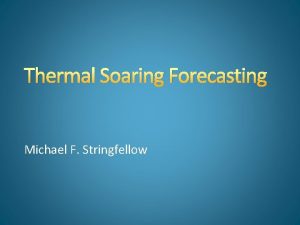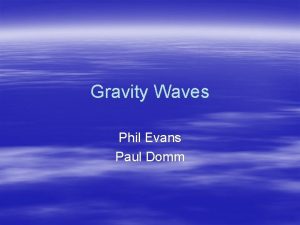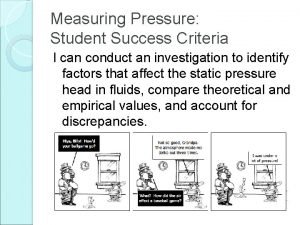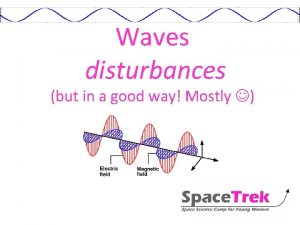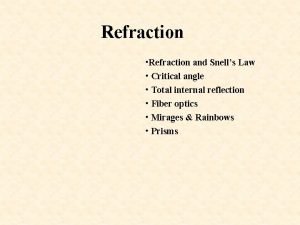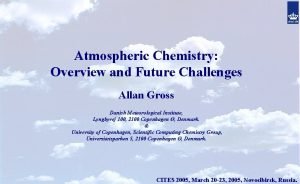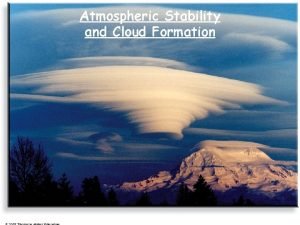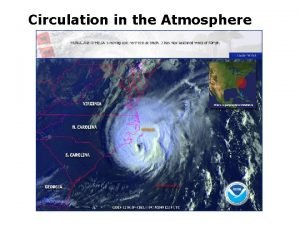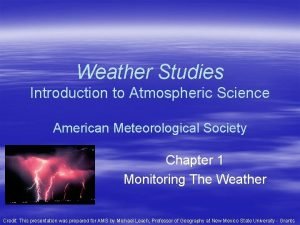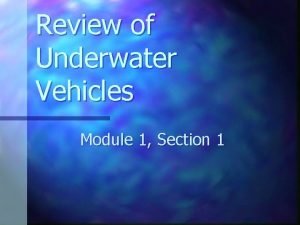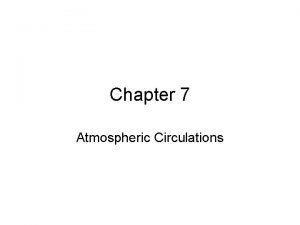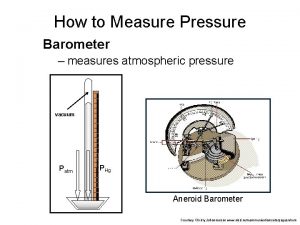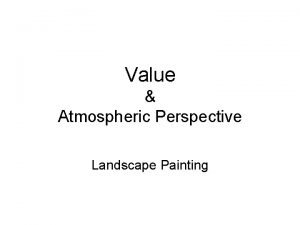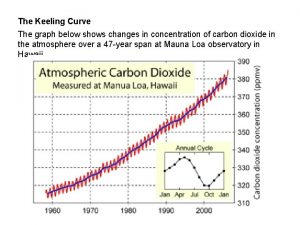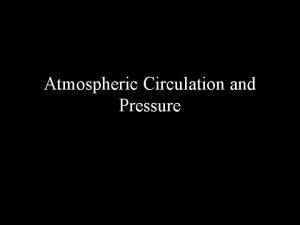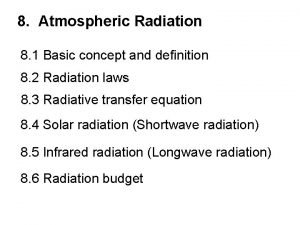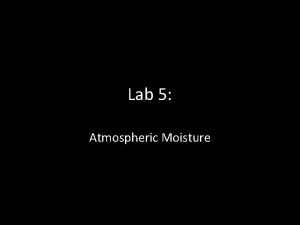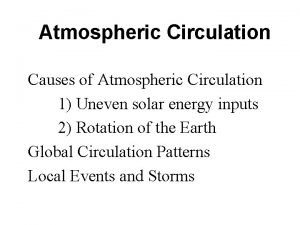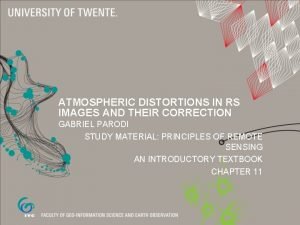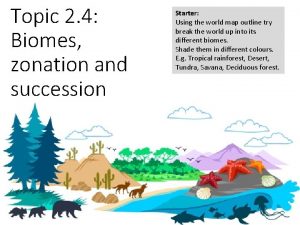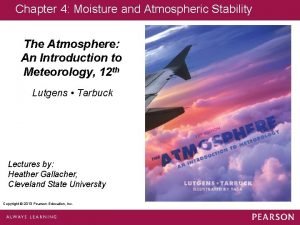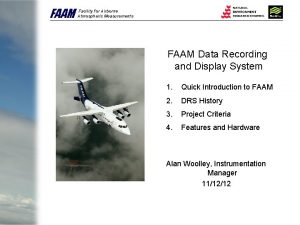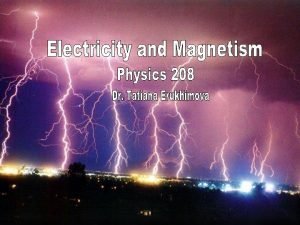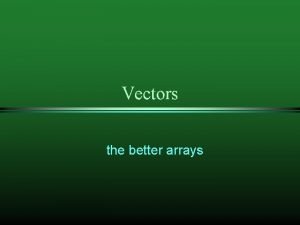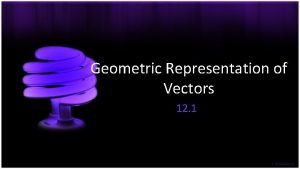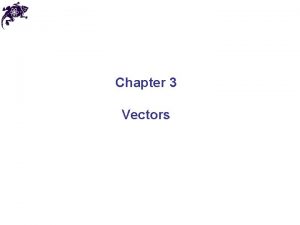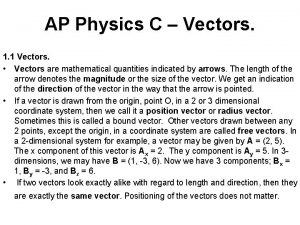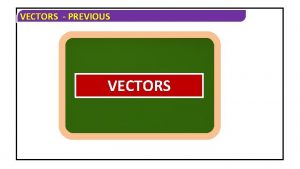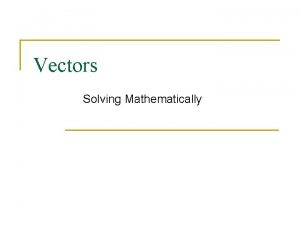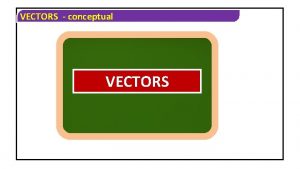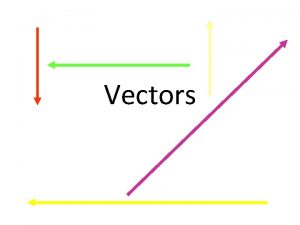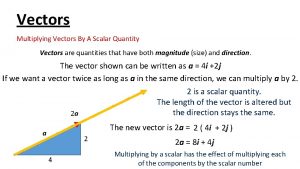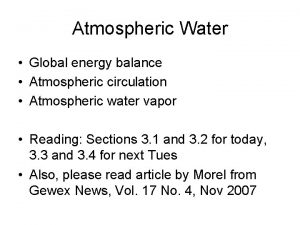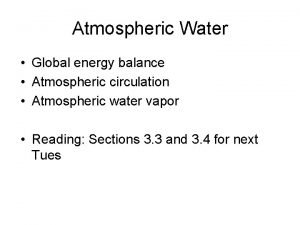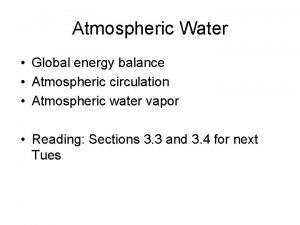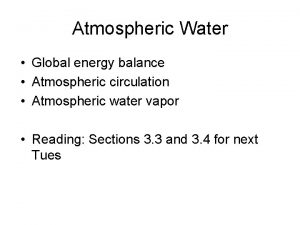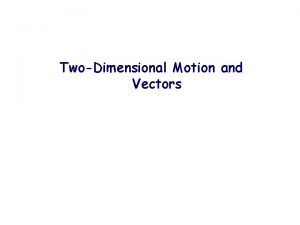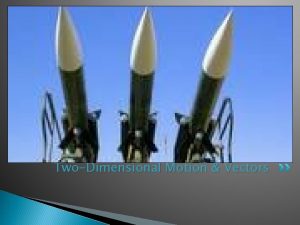Provision of atmospheric motion vectors AMVs for the

































- Slides: 33

Provision of atmospheric motion vectors (AMVs) for the use in Numerical Weather Prediction (NWP) modelbased reanalysis in the framework of SCOPE-CM (Sustained and coordinated processing of Environmental Satellite data for Climate Monitoring) Toshiyuki KURINO (presented by Kazuki Shmoji) Data Processing Department Meteorological Satellite Center (MSC) Japan Meteorological Agency (JMA)

Objective • The major objective of this project is to provide Atmospheric Motion Vectors (AMV), Clear Sky Radiances (CSR) and All Sky Radiances (ASR) for the use in global and potentially regional Numerical Weather Prediction (NWP) model-based reanalysis. • Furthermore, AMV data provided on regular grids may also be utilised in the analysis of dynamical systems in relation to water vapour transport or monsoon studies. (e. g. SCM-04: Utility of Satellite derived winds for Monsoon and Cyclone studies over Indian region)

Satellite Sensor Record for geostationary imagers Satellite System Position Longitude Period Image rate for Comments AMV derivation GOES-E GOES-W Meteosat (2 - 10) 75° W 135° W 0° 1980 – today 1982 – 2004 - today Variable 30 min 15 min Meteosat (5 and 7) 63° E 57° E 1997 – 2005 - today 30 min Called Indian Ocean Data Coverage (IODC) Meteosat 3 70° W 75° W 1991 – 1993 – 1995 30 min GMS (GOES-9) 140° E 155° E 1978 – 2003 – 2005 30 min Called Atlantic Data Coverage (ADC) Called e. Xtended ADC (XADC) GOES-9 was put at the Western Pacific Region MTSAT 140° E 145° E 2005 – 2010 – today 15 min, 30 min, 60 min

Satellite Sensor Record for polar orbiting imagers • AMVs can also be derived from instruments on board polar orbiting satellites providing measurements in infrared window and water vapour absorption channels. Instruments utilised by NOAA, CIMSS and EUMETSAT are AVHHR (IR-window) and MODIS (IR window and water vapour). AVHRR data coverage reaches back to 1979 and MODIS data coverage starts in 2000. http: //noaasis. noaa. gov/NOAASIS/ml/avhrr. html (NOAA/NESDIS) http: //www. eumetsat. int/Home/Main/Satellites/Metop/Instruments/SP_2010053153 142514 (EUMETSAT) http: //modis. gsfc. nasa. gov/ (NASA)

Algorithms and Processing chains (1/3) • The overarching objective would be an AMV processing system that could be applicable to all historical geostationary satellites. • The existing processing systems at EUMETSAT and JMA do not have this capability, but could be extended. • The CIMSS AMV derivation algorithm is capable of reprocessing all historical MODIS, AVHRR, GOES, Meteosat and GMS/MTSAT images. • The existing algorithms differ between AMV processing agencies, and a first step towards a more unified algorithm would be the analysis of the differences.

Algorithms and Processing chains (2/3) • The project would seek close interaction with the CGMS International Winds Working Group (IWWG) to benefit from ongoing comparison activities that might need to be enhanced to cover the temporal dimension of the AMVs long term records. • The project would also seek close interaction with SCOPECM sub-project, SCM-06: Inter-calibration of imager observations from time-series of geostationary satellites (IOGEO) through the experience from Global Space-based Inter-calibration System (GSICS) for reprocessing AMVs and CSRs/ASRs long term records. • GSICS provides bias corrections through the inter-calibration of satellite sensors with respect to selected references that can be applied to generate reprocessed CSR and ASR products as Fundamental Climate Data Records (FCDRs) and related Thematic Climate Data Records (TCDRs).

Algorithms and Processing chains (3/3) • The reprocessing of AMV requires the background fields of NWP, which are crucial for its height assignment. The periods of the exsisting reanalyses fully cover the operation periods of historical meteorological satellites. Thus, the updated reanalysis fields are expected to be used in the AMV reprocessing with the quality information of the reanalysis fields. • The project would exchange information with reanalysis communities on their calculation plans and the quality. The best forum identified for discussion of data issues is the WCRP Data Advisory Council that has representation from reanalysis centres. • The project will encourage reanalysis centres to give feedback and support AMV, CSR and ASR validation exercises by involving observation feedback archives and associated tools such as developed at ECMWF.

Historical overview of related reanalysis activities (1/2) • The first reanalysis was the 15 -year ECMWF Reanalysis (ERA-15). ERA-15 collected and used historical AMV data generated operationally. Such reanalysis activity was extended to other NWP centres such as NCEP/NWS/NOAA, JMA and NASA, and some of them performed reanalysis calculation repeatedly extending period and upgrading NWP and data assimilation system. • As the extension of reanalysis, accurate observation data were requested. To meet the requirement, EUMETSAT reprocessed AMVs for past Meteosat satellites. It reprocessed Meteosat-2 to 7 AMVs and provided them to ECMWF for ERA-40 and ERA-Interim. • The first reprocessing by JMA was performed to provide reprocessed GMS-3 to -5 AMVs to the Japanese 25 -year Reanalysis (JRA-25).

Historical overview of related reanalysis activities (2/2) • Currently, EUMETSAT is performing the reprocessing of AMVs, CSRs and ASRs for Meteosat-8 and 9 data within the ERA-CLIM project. This activity will continue in ERACLIM 2 and also include METEOSAT-2 to 7. • JMA/MSC has completed the reprocessing of AMVs for GMS-1, 3, 4, 5, GOES-9 and MTSAT-1 R data within the JRA-55 project. JMA/MSC also has completed CSRs reprocessing for GMS-5, GOES-9 and MTSAT-1 R. • University of Wisconsin/CIMSS has completed the re-processing of 18 -19 years of GOES AMVs.

ERA-CLIM • ERA-CLIM: 2011 – 2013 – CSR and ASR from MSG for 2004 – 2011 (ongoing) – AMV from METOP-A for 2007 – 2012 (completed for two algorithms (EUMETSAT & CIMSS)) • ERA-CLIM 2: 2014 – 2016 – AVHRR AMVs from 1982 to present – AMV from MFG and MSG 1982 to present

Atmospheric Motion Vectors (AMVs) from GEO MSG 2004 – 2011 • • 3 -hourly winds IR 10. 8 µm VIS 0. 8 µm WV 7. 3 µm & 6. 2 µm Speed AMV IR, all, high, mid, low altitudes

Summary of proposed project The major points to work on to reach the goal of this project are: - Analysis of differences in AMV, CSR and ASR product definition, algorithms and processing chains for instruments in geostationary and polar orbit; - Development of a plan for a more coherent product suite for all instruments; - Enhancement of AMV algorithms with a quantitative uncertainty estimate; - Establishment of a validation framework for AMVs by agreeing on a metric, certain quality analysed non-satellite observations and by utilising means from reanalysis centres; - Enhancement of the documentation towards a coherent description of the products

Current and targeted Maturity Level • The software used to create AMVs, CSRs and ASRs products is in operational use and can be considered mature. However, as one objective of this project is to present the products in a more coherent way by potentially using a common software. Software Readiness Meta Data Documentation Validation Public Access Utility Current Maturity level 3 3 3 2 4 5 Targeted Maturity level 5 5 5 6

Duration of the project and schedule (5 years from 1 Jan 2014) − − − − Review on the use of AMV and CSR in past reanalysis; 2014 Analyze requirement for future reanalysis; Analyze the differences in AMV product definition, algorithms and processing chains and develop a plan for a globally coherent product; Perform feasibility analysis of GOES AMV processing with respect to satellite observation schedule and forward analysis result to reanalysis centres Encourage other space agencies operating geostationary /polar orbital instruments to join the project; Open a project portal site − Build common validation framework following agreed metric involving 2015 radiosonde observations and tools provided by reanalysis centres; Perform processing of geostationary products; − − Perform processing of polar orbit data; Perform processing of geostationary products (continue); Validate products from geostationary satellites; Analyze feedback on early phase products from reanalysis centers 2016 − − Update the documentation of all products in coherent style; Validate products from polar orbiting satellites; 2017 − Analyze feedback on products from reanalysis centres and other applications 2018 and develop a plan for SCOPE-CM phase 3 All JMA, EUM, NOAA, NOAA JMA, EUM JMA EUM, JMA, NOAA All EUM , JMA, NOAA All

Status and Progress - GOES AMV Reprocessing (Point 4) - AMV workshop at ECMWF (Point 3) - Project Portal Site (Point 6)

Status of GOES AMV Reprocessing C. Velden, D. Santek, D. Stettner, S. Wanzong Cooperative Institute for Meteorological Satellite Studies (CIMSS) University of Wisconsin-Madison U. S. A 20 February 2014

GOES AMV Reprocessing: Phase 1 a • Derive hourly AMV datasets from each of the two GOES operational satellites (East and West) from 1995 to present. – GVAR satellite series (GOES-8 to -15); entire data archive on-line at UW-SSEC – Mostly stable calibration and geolocation throughout time period – Utilize full-resolution image triplets from longwave IR (window), shortwave IR, and water vapor channels, and the visible channel at ½ spatial resolution – Only GOES Imager, no Sounder data used – Divide processing into two sectors per satellite: Northern and Southern Hemisphere • Employ the current NOAA operational AMV processing algorithm • ERA-Interim analyses used for first guess and in AMV height determination • AMV datasets processed on a cluster computer system to reduce reprocessing time -- about a 3 -month (dedicated) effort

GOES AMV Reprocessing: Coverage Blue: Northern Hemisphere coverage Yellow: Southern Hemishpere coverage GOES-West 07 May 2005 1500 UTC GOES-East 07 May 2005 1500 UTC

GOES AMV Reprocessing: Status • Continuous, hourly AMV datasets have been re-processed for the two GOES operational satellites from 1995 to mid-2013. – ~600, 000 AMV datasets generated – Quality control of the AMVs is underway, both automated and visual – Output text files will be prepared for community access (April release expected) • This will complete Phase 1 a of the reprocessing effort • Future GOES AMV reprocessing plans (currently unfunded): – Phase 1 b: Reprocess the same dataset, but using the GOES-R cluster tracking algorithm (J. Daniels, NOAA/NESDIS) and cloud height algorithm (A. Heidinger, NOAA/NESDIS), both under development – Phase 2: Extend the reprocessing to earlier U. S. satellites (from 1978 onward), which will require a more substantial effort to: • Correct sensor calibration and geolocation • Produce cloud products (heights) for the pre-GVAR satellites

AMV workshop at ECMWF together with EUMETSAT and CIMSS • In 2013 a workshop including EUMETSAT and CIMSS was held at ECMWF. • The differences between the EUMETSAT and CIMSS algorithms were analysed. • Usability of AMV products at ECMWF discussed. • Results forwarded to JMA and IWWG.

Contents for Project Portal Site Reprocessing Projects • JMA’s website for reprocessing of Satellite Products for Climate http: //mscweb. kishou. go. jp/product/reprocess/ • EUMETSAT’s website on Climate Data Records: http: //www. eumetsat. int/website/home/Data/Products/Climat e/index. html Reanalysis Projects • JRA-55 website: http: //jra. kishou. go. jp/JRA-55/index_en. html • ERA-CLIM website: http: //era-clim. eu/

Observational Data available for JRA-55 GNSS: Global Navigation Satellite System 22

Appendix Summary of reprocessing efforts for GOES, METEOSAT, Himawari, and AVHRR, mostly AMVs (report from AMV workshop at ECMWF with the addition of JMA’s status for Himawari) as of Sep, 2013 (need to be updated)

Summary of reprocessing efforts for GOES, METEOSAT, Himawari, and AVHRR, mostly AMVs as of Sep, 2013 (1/10) (1) Programmatic CIMSS EUMETSAT JMA/MSC Current data holdings GOES, SMS-1, -2, MODIS, KALPANA, POES AVHRR, COMS, GMS, METEOSAT -3 onwards, MTSAT, FY- 2 C/D/E METEOSAT, METOP and POES AVHRR (starting with NOAA-18) GMS, (GOES-9), MTSAT Already reprocessed AMV from POES AVHRR (NOAA-7 to – 18) 1) AMV and CSR from AMVs from GMS-1 to METEOSAT-2 to -7 up to MTSAT, CSRs from GMS-5 end of 2000 to MTSAT 2) AMV from AVHRR METOP-A up to end of 2012 (using two algorithms, EUMETSAT operational and CIMSS) Current production GOES GVAR -8 to -15 (1995 -present): AMV. Expected to be available by 2014. Includes processing of 30 - minute images, 15 -minute images, and 7 -minute rapid scan images (producing possibly 1 wind product every 7 minutes, though limited to extreme weather situations) AMV, CSR, ASR, THU, CTH, NDVI, CLM, Cloud type, cloud top pressure, cloud top temperature, from METEOSAT-8 and -9. Expected to be available by 2014 AMVs and CSRs

Summary of reprocessing efforts for GOES, METEOSAT, Himawari, and AVHRR, mostly AMVs as of Sep, 2013 (2/10) Funding for current production Committed reprocessing Funding for committed reprocessing CIMSS EUMETSAT SSEC grant EU FP 7 ERA-CLIM and EUMETSAT own resources JMA/MSC own resources 1) AMV, CSR, ASR from Meteosat-7 for years 2001 -2004 for zero degree, and for years from 2001 and up to real time for Indian Ocean Data Coverage. Expected to be available by 2014. 2) AMV from AVHRR POES and AVHRR METOP-A and -B reprocessed by 2015. 3) AMV, CSR, ASR from METEOSAT-2 to -9 based on inter-satellite calibrated IR radiances and updated algorithm. Expected to be available by 2016. EU FP 7 ERA-CLIM 2 and EUMETSAT own resources JMA/MSC

Summary of reprocessing efforts for GOES, METEOSAT, Himawari, and AVHRR, mostly AMVs as of Sep, 2013 (3/10) Considered reprocessing Of value, but unfunded CIMSS EUMETSAT POES AVHRR using updated code and input and more metadata in output MODIS from EOS-Aqua and Terra Repeat current GVAR reprocessing but with latest algorithm (NESDIS GOES-R tracking), and extend reprocessing to older GOES satellites, pre-GVAR. After ERA-CLIM 2 updated codes may arrive from SCOPE-CM and can be used for increasing the consistency of geostationary AMV products. Also planned Meteosat First Generation image reprocessing and intersatellite calibration lead to new reprocessing of the same data - KALPANA - GOES-1 to -7 (1978 -1995) - SMS-1 and SMS-2 (1979 -1981) - ATS (1974) - Routine METEOSAT-8 and -9 rapid scan images (since May 2008) at 5 -minute intervals, producing possibly 1 wind product every 20 minutes, limited to 15 N-70 N - METEOSAT-8 and -9 high resolution visible channel images JMA/MSC

Summary of reprocessing efforts for GOES, METEOSAT, Himawari, and AVHRR, mostly AMVs as of Sep, 2013 (4/10) CIMSS EUMETSAT JMA/MSC Problems preventing reprocessing of earlier data - GOES-1 to -7 cannot be reprocessed until navigation and calibration have been corrected - Upcoming (GOES-R) winds algorithm cannot be applied to reprocessing prior to GOES-8; requires development to cloud analysis - Current CCC algorithm cannot be applied to METEOSAT-2 to -7 on the current EUMETSAT reprocessing system; requires development to cloud analysis product - For Meteosat First Generation a reprocessing of the Image data including improvements in navigation and image resampling as well as anomaly detection is planned but the resources are tight and time of realisation is uncertain. VIS AMV of GMS-1 not processed due to stripe noise Input data preservation All original tapes transferred Funded and committed archive to digital (online) at SSEC preservation (EUMETSAT Data Centre) Data Centre Some original digital data was lost in early date for GMS period; IR image before March 1981, VIS image before March 1987 excepting 1979

Summary of reprocessing efforts for GOES, METEOSAT, Himawari, and AVHRR, mostly AMVs as of Sep, 2013 (5/10) CIMSS Input data backup (disaster recovery) EUMETSAT - NOAA NCDC holds the official - EUMETSAT Data Centre GOES archive - Third copy back-up off-site - SSEC has additionally processed the original GOES archive and has rescued more data and produced data of higher quality than current NCDC holdings. JMA/MSC - JMA/MSC Data Archives - Third copy back-up in distributed universities and research institutes (no systematic preservation) (2) Reprocessing methods, including input and output interfaces Input sensor data CIMSS EUMETSAT JMA/MSC GVAR level 1 b AVHRR POES level 1 b and regridded METEOSAT level 1. 5 MVIRI and SEVIRI AVHRR METOP level 1 b (and IASI METOP level 1 c) VISSR, SVISSR for GMS HIRID and HRIT for MTSAT

Summary of reprocessing efforts for GOES, METEOSAT, Himawari, and AVHRR, mostly AMVs as of Sep, 2013 (6/10) Input channels CIMSS EUMETSAT JMA/MSC - AVHRR: IR 10. 8 micron - GOES: WV 6. 7 micron, IR 10. 7 micron, SWIR 3. 9 micron, and VIS - AVHRR: IR 10. 8 micron - METEOSAT-8 and -9: IR 10. 8 micron, WV 6. 2 and 7. 3 micron, VIS 0. 8 micron Note: VIS 0. 6 micron not used for AMV METEOSAT-2 to -7: IR [10. 5 -12. 5 micron], WV [5. 7 -7. 1 micron], VIS [0. 5 -0. 9 micron] GMS-5, GOES-9 and MTSAT (IR, WV, VIS) GMS-(1 -5) (IR, VIS) - GOES: ERA-Interim reanalysis analyses Pressure levels 1 x 1 degree 2 grid 6 -hourly - AVHRR: NCEP/NCAR reanalysis analyses Pressure levels 1 x 1 degree 2 grid 6 -hourly ERA-Interim 6 -hourly forecasts (+6 h and +12 h steps) 60 model levels for AVHRR, 31 model levels for METEOSAT-8 and -9, 16 model levels for METEOSAT-2 to - 7 0. 5 x 0. 5 degree 2 grid for AVHRR, 1 x 1 degree 2 grid for METEOSAT-8 and -9, 1. 5 x 1. 5 degree 2 grid for METEOSAT-2 to -7 6 -hourly JRA-25 reanalysis data (Grid: 1. 25 degree 23 Layers) Linear in time 0. 63 micron Input background Background time interpolation

Summary of reprocessing efforts for GOES, METEOSAT, Himawari, and AVHRR, mostly AMVs as of Sep, 2013 (7/10) CIMSS EUMETSAT JMA/MSC Background used for - Height assignment for AVHRR and GOES - First-guess to tracking solution for AVHRR and GOES - Quality control for GOES and AVHRR in recursive filter editing system - Height assignment for AVHRR and METEOSAT (no best fit applied, EBBT only) - First-guess to tracking solution for AVHRR Cloud height assignment for AMV, Sea Surface Temperature for CSR Tracking Compute 2 vectors from 3 consecutive images, spaced by 30 minutes for GOES and 100 minutes for AVHRR, using first-guess tracking solution from background, and then average the two individual vectors to produce final solution METEOSAT: Compute 3 vectors from 4 consecutive images, spaced by 30 minutes for METEOSAT-2 to -7, and 15 minutes for METEOSAT-8 and -9 AVHRR: Compute 1 vector from 2 consecutive images spaced by 100 minutes, using firstguess tracking solution from background Cross Correlation method, Compute 2 vectors from 3 consecutive imagery METEOSAT: EBBT for VIS, IR, and WV and H 2 O-intercept for IR and WV from METEOSAT-2 to -7, Cloud analysis product’s output for METEOSAT-8 and -9 (CCC method) Final assignment for METEOSAT based on 3 intermediate products (average) METOP AVHRR: EBBT (and IASI) EBBT : from GMS-1 to GMS-4 EBBT and IR-WV intercept : GMS-5, GOES-9, MTSAT Lp norm for GOES Cross-correlation for AVHRR Height assignment GOES: EBBT for VIS, IR, and WV H 2 O-intercept for IR and cloudy WV, only upper levels CO 2 -slicing for IR and cloudy WV, only upper levels Cloud base for VIS and IR, only low levels Height assignment based on the above (decision tree) POES AVHRR: Same as above, but no H 2 O-intercept and CO 2 -slicing

Summary of reprocessing efforts for GOES, METEOSAT, Himawari, and AVHRR, mostly AMVs as of Sep, 2013 (8/10) CIMSS EUMETSAT JMA/MSC Height assignment future method 1 DVAR for GOES and AVHRR Optimal estimation using the OCA output for METEOSAT-8 and -9 Quality indicator EUMETSAT quality indicators (QIs), with and without background (forecast) check RFF quality indicator using height reassignment and potential speed bias adjustment EUMETSAT quality indicators (QIs), with and without background (forecast) check EUMETSAT QI Quality control (yes/no) QI has to exceed 60 Visual inspection of time-series of validation metrics w. r. t RAOB QI has to exceed 30 QI has to exceed 60 Native output format Mc. IDAS MD format (binary) METEOSAT-native EPS format for AVHRR "JMA Vector File" Delivery format Text (space-separated) BUFR

Summary of reprocessing efforts for GOES, METEOSAT, Himawari, and AVHRR, mostly AMVs as of Sep, 2013 (9/10) CIMSS EUMETSAT JMA/MSC Processing system: input data acquisition Satellite data online Satellite data retrieved from EUMETSAT Data Centre Satellite data retrieved from JMA/MSC Data Centre Processing system: hardware Linux cluster, can run ~50 simultaneous streams Legacy RMPEF (32 -bit SUN environment) for METEOSAT R-EPS (IBM AIX Power 6) for AVHRR Can run 3 simultaneous streams for METEOSAT, and 24 for AVHRR Linux Hardware resource In-kind contribution from SSEC Funded by EUMETSAT Funded by JMA/MSC Processing system: main software For GOES, NOAA/NESDIS operational For AVHRR, CIMSS code EUMETSAT operational ground segment software, adapted for reprocessing purposes JMA AMV derivation software Reprocessing speed 3900 days/day for AVHRR (using regridded input) Estimated 440 days/day for GOES 50 days/day for AVHRR (including radiance mapping) 9 days/day for METEOSAT MTSAT : 10 days/1 day OTHERS : 45 days/1 day

Thank you for your attention
 Public provision
Public provision Sin 37
Sin 37 Starlings displacing bluebirds from nesting sites
Starlings displacing bluebirds from nesting sites Soaring forecast
Soaring forecast Forceparcel
Forceparcel Gauge pressure formula
Gauge pressure formula Earths layers definition
Earths layers definition Atmospheric opacity
Atmospheric opacity Atmospheric vortex engine
Atmospheric vortex engine Critical angle snells law
Critical angle snells law Atmospheric reaction
Atmospheric reaction Conditionally unstable atmosphere
Conditionally unstable atmosphere Atmospheric convection
Atmospheric convection Penn state meteorology jobs
Penn state meteorology jobs Atmospheric circulation
Atmospheric circulation Atmospheric physics lecture notes
Atmospheric physics lecture notes American meteorological society
American meteorological society Atmospheric diving suit
Atmospheric diving suit Single cell model of atmospheric circulation
Single cell model of atmospheric circulation Barometer vacuum
Barometer vacuum Apes unit 2
Apes unit 2 Aerial perspective landscape painting
Aerial perspective landscape painting Atmospheric heaven
Atmospheric heaven The graph below shows atmospheric carbon dioxide
The graph below shows atmospheric carbon dioxide Atmospheric carbon dioxide graph
Atmospheric carbon dioxide graph Single cell model of atmospheric circulation
Single cell model of atmospheric circulation Atmospheric
Atmospheric Lab 5 atmospheric moisture
Lab 5 atmospheric moisture Atmospheric convection
Atmospheric convection Atmospheric distortion correction
Atmospheric distortion correction Zonation and succession
Zonation and succession Atmospheric stability
Atmospheric stability Facility for airborne atmospheric measurements
Facility for airborne atmospheric measurements Dr. erukhimova
Dr. erukhimova



